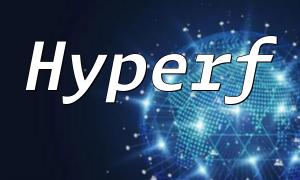Building Elastic and Scalable Microservice Applications: A Deep Dive into PHP Hyperf Microservices Development
In today’s internet era, microservices architecture has become the preferred choice for enterprises to improve system flexibility and scalability. Compared to traditional monolithic architectures, microservices better accommodate rapid and complex business growth. PHP Hyperf, as a high-performance framework based on Swoole, has increasingly become an important tool for PHP microservices development. This article will introduce the core features and development methods of PHP Hyperf to help build efficient microservice applications.
1. What is PHP Hyperf?
PHP Hyperf is a high-performance microservice framework based on Swoole coroutines. It supports massive concurrent connections with performance far surpassing traditional PHP frameworks. It offers rich components and flexible tools to enable developers to easily build elastically scalable microservice systems.
2. Core Features of PHP Hyperf
- Elastic Scalability: Utilizing process pools, coroutine pools, and connection pools, PHP Hyperf dynamically adjusts resources according to business needs, enabling efficient elastic scaling and enhancing system stability.
- Multi-protocol Support: Supports HTTP, WebSocket, TCP, and other protocols to meet diverse needs such as API development and real-time message pushing.
- High Flexibility: Provides annotations, middleware, and dependency injection to simplify development, while supporting various databases and caching solutions to fit different business scenarios.
3. PHP Hyperf Microservices Development Process
- Environment Setup: Ensure the server has Swoole extension and PHP Hyperf installed, typically using Composer; verify installation through command line.
- Create Project: Use Composer to create a Hyperf project, then enter the project directory to start development.
- Write Controllers: Define controllers in the app/Controller directory and configure routing and middleware using annotations.
- Configure Routing: Set routing rules in the config/routes.php file to link URLs with controller methods; supports route groups and middleware.
- Run Project: Execute the start command to launch the service and test the application via local ports.
- Write Services: Implement business logic in app/Service, leveraging dependency injection to use other modules or components.
- Database Configuration: Configure database connections in the config/autoload directory and use Hyperf ORM for database operations.
- Build Microservices Architecture: Split the application into multiple modules and services, using RPC or message queues for inter-service communication.
4. Advantages of PHP Hyperf Microservices Development
- High Performance: Powered by Swoole, it efficiently handles massive concurrent requests and improves resource utilization.
- Elastic Scalability: Supports dynamic scaling up or down to ensure system flexibility and stability.
- High Development Efficiency: Rich components and tools simplify development and speed up application construction.
- Good Maintainability: Modular design makes the application easier to manage and extend to adapt to changing business needs.
5. Conclusion
PHP Hyperf offers a solid technical foundation for microservice applications with its high performance and elastic scalability. Mastering its core features and development process helps build stable and efficient microservice systems. As microservices architecture continues to spread, choosing the right framework is key to enhancing application competitiveness.










